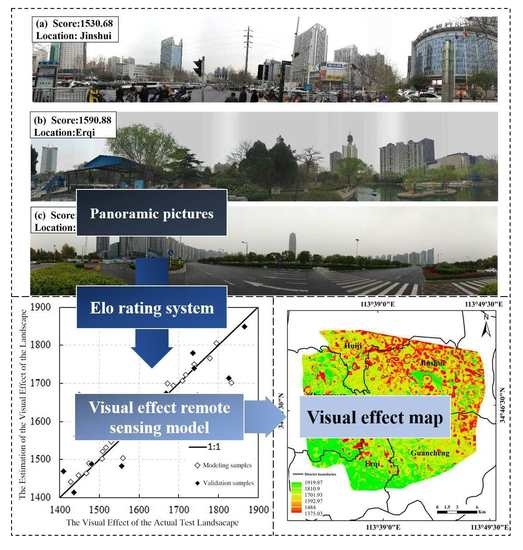The Use of Remote Sensing to Quantitatively Assess the Visual Effect of Urban Landscape—A Case Study of Zhengzhou, China
Abstract
:1. Introduction
2. Data and Method
2.1. Overview of the Study Area
2.2. Introduction to Research Methods
2.3. Data Acquisition and Processing
2.3.1. Acquisition of Panoramic Images
2.3.2. Landsat8 OLI Images and Classification
2.3.3. Surface Elevation Data
2.4. Elo Rating System
2.5. Remote Sensing Model of the Landscape Visual Effect
2.6. Model Accuracy Assessment
3. Results and Analysis
3.1. Elo System Rating Results
3.2. Visual Effect Remote Sensing Model Result
3.2.1. Land Use Status and Surface Elevation
3.2.2. Visual Effect Modeling Results
3.2.3. Visual Effect Estimation Results
3.2.4. Verification of the Method
4. Discussion
4.1. Visual Effect Simulation
4.2. Effect of Typical Landscape Proportions in the Pictures to Visual Effect Scores
4.3. Limitations and Outlook
5. Conclusions
- (1)
- Using the combination of the questionnaire and the Elo rating system, the visual effect of urban landscape can be quantified and scored effectively. This provides a feasible quantitative assessment method for the assessment of the urban landscape visual effect.
- (2)
- Using the combination of the remote sensing technology and ANN simulation technology, the remote sensing estimation model of the urban landscape visual effect can be effectively constructed. By using 32 sampling points to train the network and 15 sampling points to validate the accuracy, the estimation model was found to have high accuracy. Those with a MAPE less than 0.05 and an RMSE less than 80 can be used for remote sensing estimation.
- (3)
- The overall landscape visual effect score of Zhengzhou in 2017 showed a low gradient distribution in the northeast and a high gradient distribution in the southwest. Furthermore, there was a high value island near the CBD of Jinshui District, indicating that the design concept of this area is advanced and pleasing to people’s visual experience.
- (4)
- The model simulation results showed that among the five elements, the building proportion has the most complex impact on the landscape visual effect. When the building proportion is 0.35 and 0.7, the visual effect score has two significant peaks. The other four elements have only one peak. The peak of vegetation proportion appears at 0.5, the peak of water proportion appears at 0.35, the peak of unused land proportion appears at 0.6, and the peak of average elevation appears at 180 m.
- (5)
- The proposed method could be easily applied to similar study areas by inputting land use maps and DSM maps into our trained ANN model.
- (6)
- The proposed scheme is friendly to any expansion. With more in situ samples and advanced machine learning methods, more exiting results could be revealed in the future works.
Author Contributions
Funding
Data Availability Statement
Conflicts of Interest
References
- Wurster, C.B. The image of the city—Lynch, K. Ann. Am. Acad. Political Soc. Sci. 1961, 336, 207–208. [Google Scholar] [CrossRef]
- Tveit, M.S. Indicators of visual scale as predictors of landscape preference; a comparison between groups. J. Environ. Manag. 2009, 90, 2882–2888. [Google Scholar] [CrossRef]
- Wei, X. The Research of Urban Landscape Space Based on the Visual Analysis; Wuhan University of Technology: Wuhan, China, 2008. [Google Scholar]
- Yang, J.; Pan, Y.; Shi, B. Evaluation of Overlooking Views of City Central District: The Case of Hong Kong. Urban Plan. Forum 2013, 5, 106–112. [Google Scholar]
- Niu, X.; Kaike, L.I. A Quantitative Approach to Visual Impact Analysis of City Skyline. Urban Plan. Forum 2013, 3, 99–105. [Google Scholar]
- Zhang, J. Applied Research in Visual Analytics for Controlling Buidling Height in Coastal Areas; South China University of Technology: Guangzhou, China, 2012. [Google Scholar]
- Kochurov, B.I.; Khaziakhmetova, Y.A.; Ivashkina, I.V.; Sukmanova, E.A. Landscape Approach in City-Planning. South Russ.-Ecol. Dev. 2018, 13, 71–82. [Google Scholar] [CrossRef]
- Mesa Carranza, J.A.; Lopez Bernal, O.; Lopez Valencia, A.P. Proposal for a system of indicators to assess the visual quality of the urban landscape in informal settlements. Rev. Arquit. 2016, 18, 35–47. [Google Scholar] [CrossRef] [Green Version]
- Piselli, C.; Castaldo, V.L.; Pigliautile, I.; Pisello, A.L.; Cotana, F. Outdoor comfort conditions in urban areas: On citizens’ perspective about microclimate mitigation of urban transit areas. Sustain. Cities Soc. 2018, 39, 16–36. [Google Scholar] [CrossRef]
- Polat, A.T.; Akay, A. Relationships between the visual preferences of urban recreation area users and various landscape design elements. Urban For. Urban Green. 2015, 14, 573–582. [Google Scholar] [CrossRef]
- Ren, X.X.; Kang, J. Effects of the visual landscape factors of an ecological waterscape on acoustic comfort. Appl. Acoust. 2015, 96, 171–179. [Google Scholar] [CrossRef]
- Talebzadeh, A.; Nowghabi, A.S. The Visual Effects of Store’s Signage Displays in Urban Landscape. Civ. Eng. J.-Tehran 2019, 5, 191–199. [Google Scholar] [CrossRef] [Green Version]
- Ren, X.; Tang, J.; Cai, J. A comfortable soundscape perspective in acoustic environmental planning and management: A case study based on local resident audio-visual perceptions. J. Environ. Plan. Manag. 2021. [Google Scholar] [CrossRef]
- Sun, R.; Chen, A.; Li, F.; Wang, D.; Xu, Z.; Chen, L. Guidelines and evaluation indicators of urban ecological landscape construction. Acta Ecol. Sin. 2013, 33, 2322–2329. [Google Scholar]
- Elo, A.E. New USCF rating system. Chess Life 1961, 1961, 160–161. [Google Scholar]
- Elo, A.E. The Rating of Chessplayers, Past and Present; Arco Pub.: New York, NY, USA, 1978. [Google Scholar]
- Goodspeed, R. Research note: An evaluation of the Elo algorithm for pairwise visual assessment surveys. Landsc. Urban Plan. 2017, 157, 131–137. [Google Scholar] [CrossRef]
- Krizhevsky, A.; Sutskever, I.; Hinton, G.E. ImageNet Classification with Deep Convolutional Neural Networks. Commun. Acm 2017, 60, 84–90. [Google Scholar] [CrossRef]
- Zhang, G.P. Time series forecasting using a hybrid ARIMA and neural network model. Neurocomputing 2003, 50, 159–175. [Google Scholar] [CrossRef]
- Gevrey, M.; Dimopoulos, L.; Lek, S. Review and comparison of methods to study the contribution of variables in artificial neural network models. Ecol. Model. 2003, 160, 249–264. [Google Scholar] [CrossRef]
- Hile, R.; Cova, T.J. Exploratory Testing of an Artificial Neural Network Classification for Enhancement of the Social Vulnerability Index. ISPRS Int. J. Geo-Inf. 2015, 4, 1774–1790. [Google Scholar] [CrossRef] [Green Version]
- Hsu, K.L.; Gupta, H.V.; Sorooshian, S. ARTIFICIAL NEURAL-NETWORK MODELING OF THE RAINFALL-RUNOFF PROCESS. Water Resour. Res. 1995, 31, 2517–2530. [Google Scholar] [CrossRef]
- Lek, S.; Guegan, J.F. Artificial neural networks as a tool in ecological modelling, an introduction. Ecol. Model. 1999, 120, 65–73. [Google Scholar] [CrossRef]
- Scarselli, F.; Gori, M.; Tsoi, A.C.; Hagenbuchner, M.; Monfardini, G. The Graph Neural Network Model. IEEE Trans. Neural Netw. 2009, 20, 61–80. [Google Scholar] [CrossRef] [PubMed] [Green Version]
- Dang, H.; Li, J. The integration of urban streetscapes provides the possibility to fully quantify the ecological landscape of urban green spaces: A case study of Xi’an city. Ecol. Indic. 2021, 133, 108388. [Google Scholar] [CrossRef]
- Yin, L.; Wang, Z. Measuring visual enclosure for street walkability: Using machine learning algorithms and Google Street View imagery. Appl. Geogr. 2016, 76, 147–153. [Google Scholar] [CrossRef]
- Heath, T.; Smith, S.G.; Lim, B. Tall buildings and the urban skyline—The effect of visual complexity on preferences. Environ. Behav. 2000, 32, 541–556. [Google Scholar] [CrossRef] [Green Version]
- Karimimoshaver, M.; Parsamanesh, M.; Aram, F.; Mosavi, A. The impact of the city skyline on pleasantness; state of the art and a case study. Heliyon 2021, 7. [Google Scholar] [CrossRef] [PubMed]
- Samavatekbatan, A.; Gholami, S.; Karimimoshaver, M. Assessing the visual impact of physical features of tall buildings: Height, top, color. Environ. Impact Assess. Rev. 2016, 57, 53–62. [Google Scholar] [CrossRef]
- Wang, T.; Kazak, J.; Han, Q.; de Vries, B. A framework for path-dependent industrial land transition analysis using vector data. Eur. Plan. Stud. 2019, 27, 1391–1412. [Google Scholar] [CrossRef]
- Wu, H.; Lin, A.; Xing, X.; Song, D.; Li, Y. Identifying core driving factors of urban land use change from global land cover products and POI data using the random forest method. Int. J. Appl. Earth Obs. Geoinf. 2021, 103, 102475. [Google Scholar] [CrossRef]
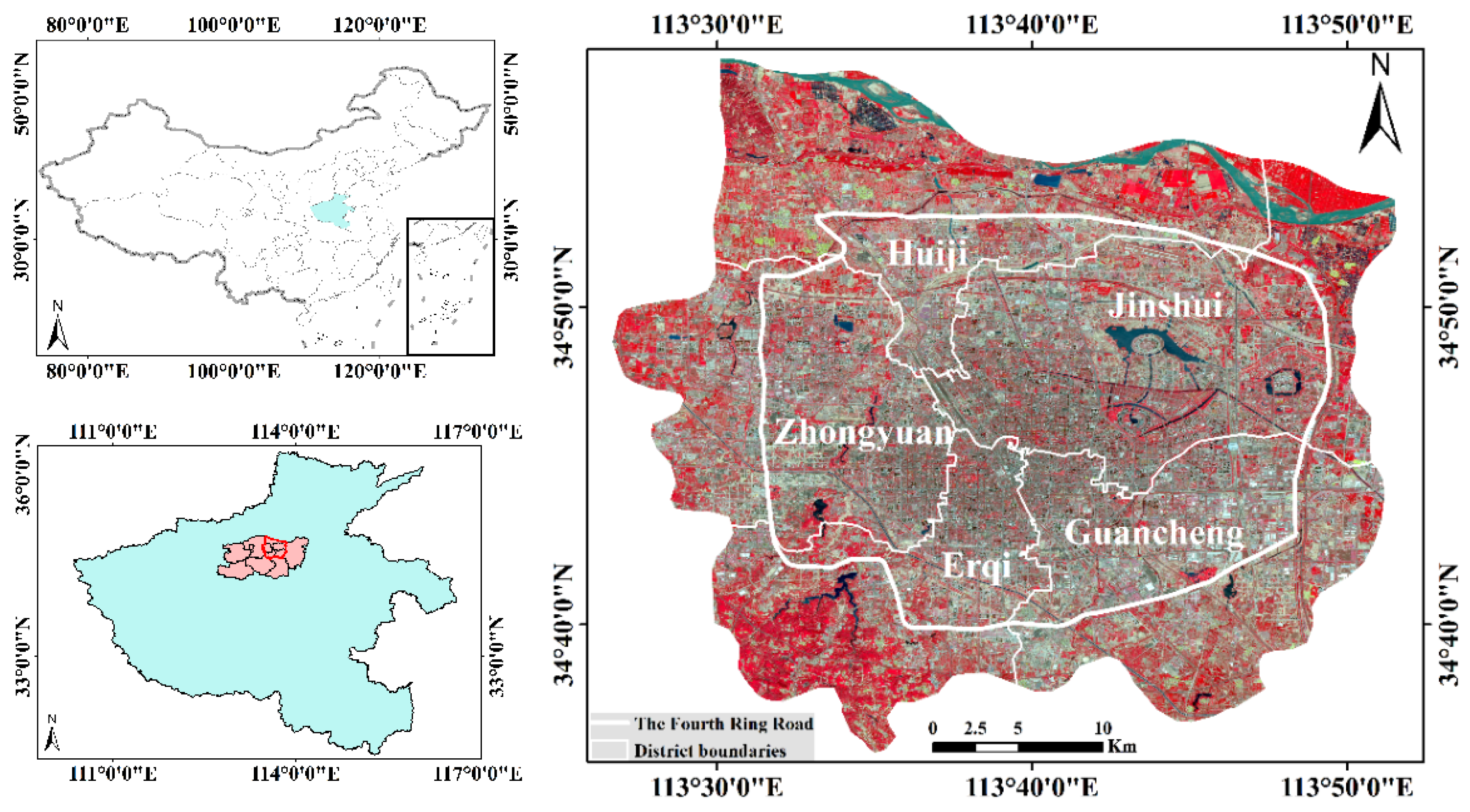
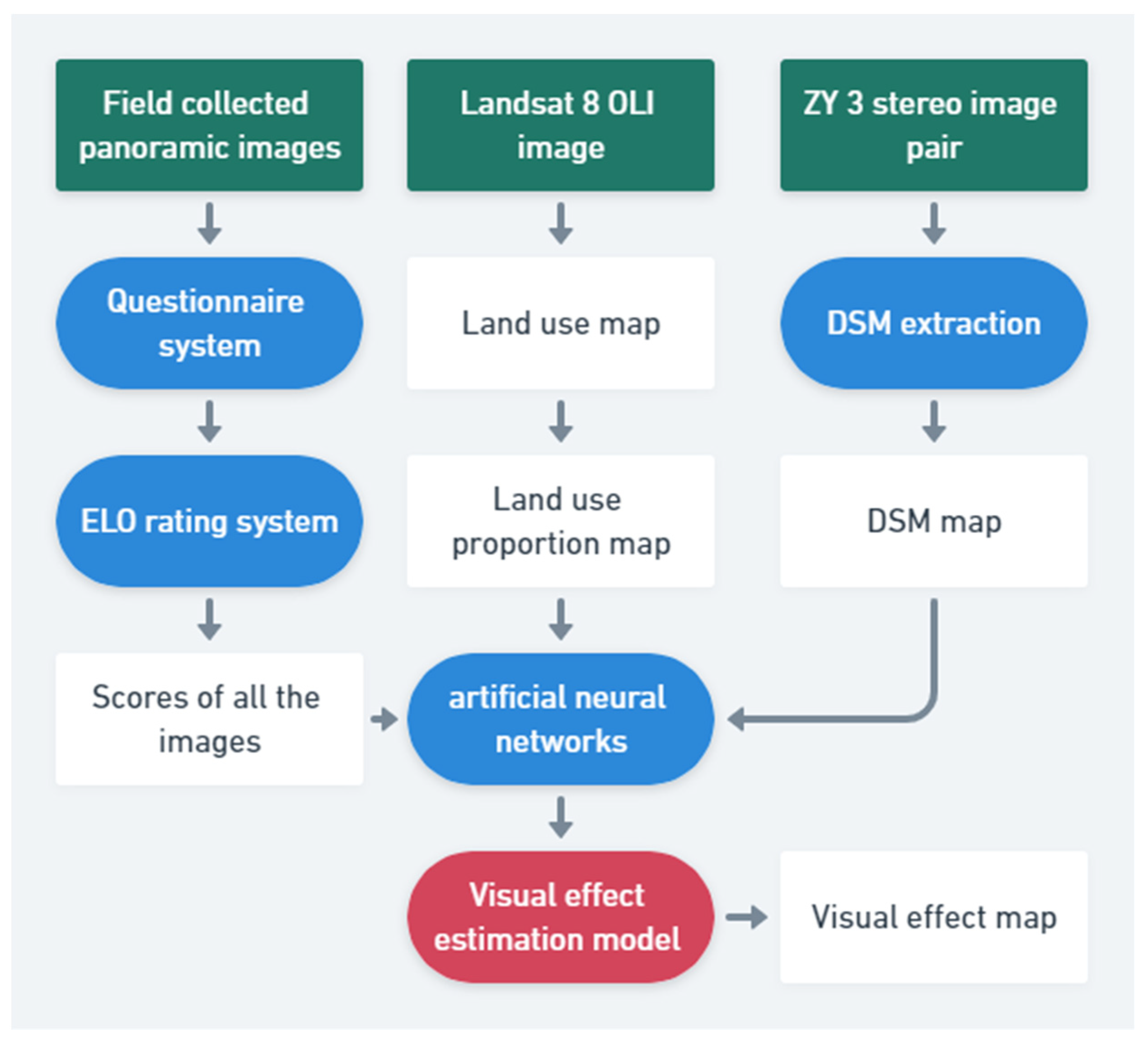

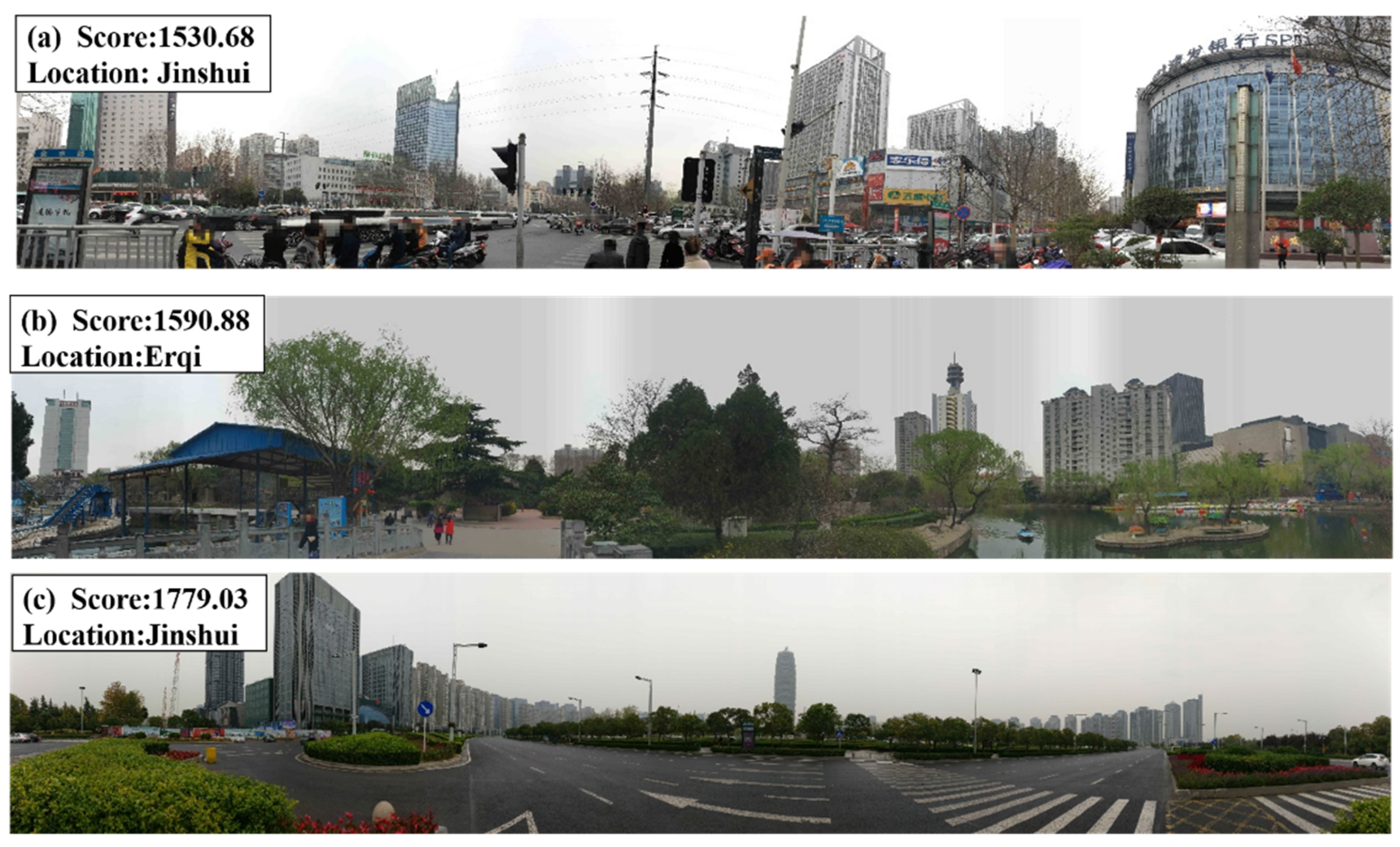

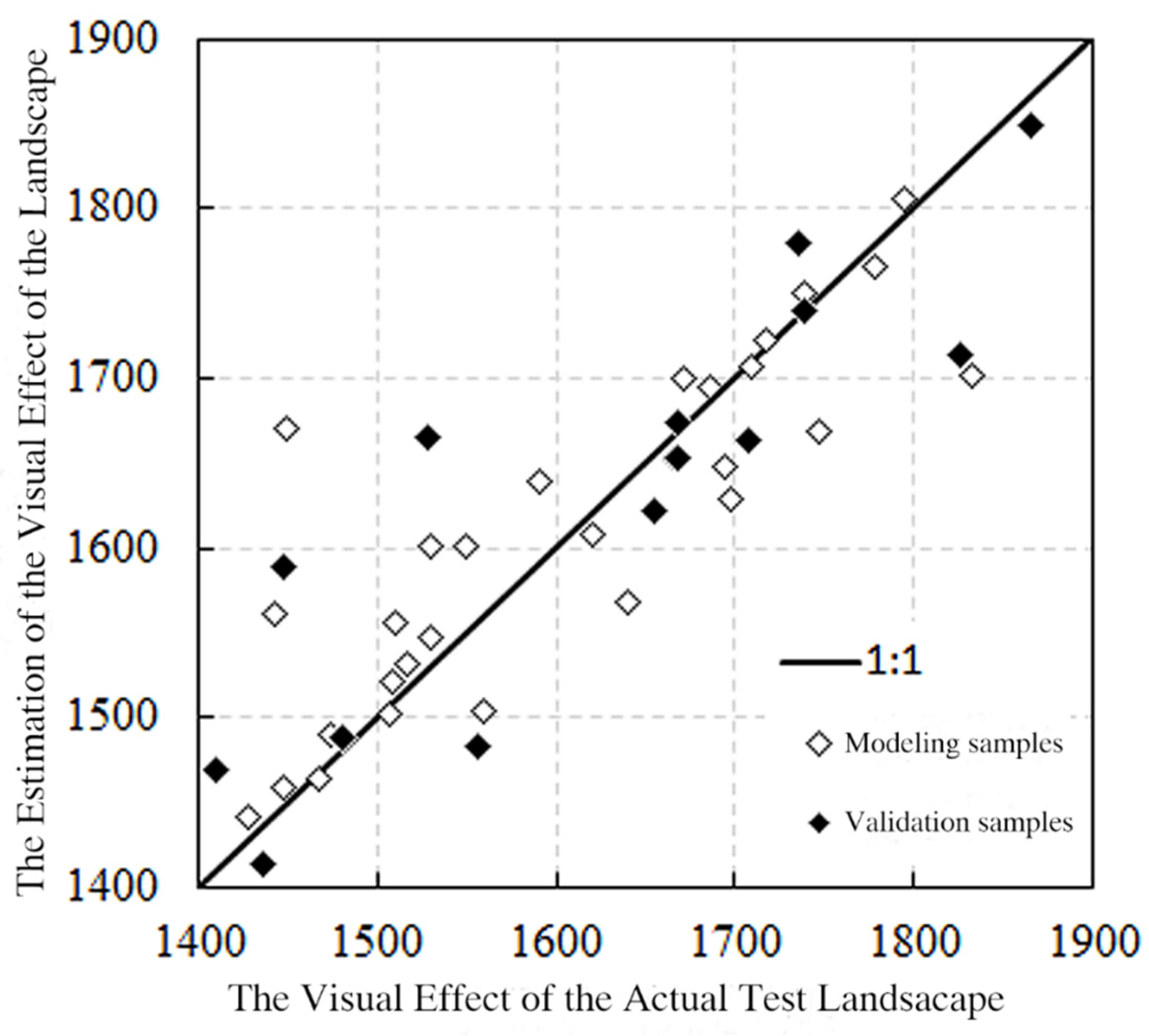
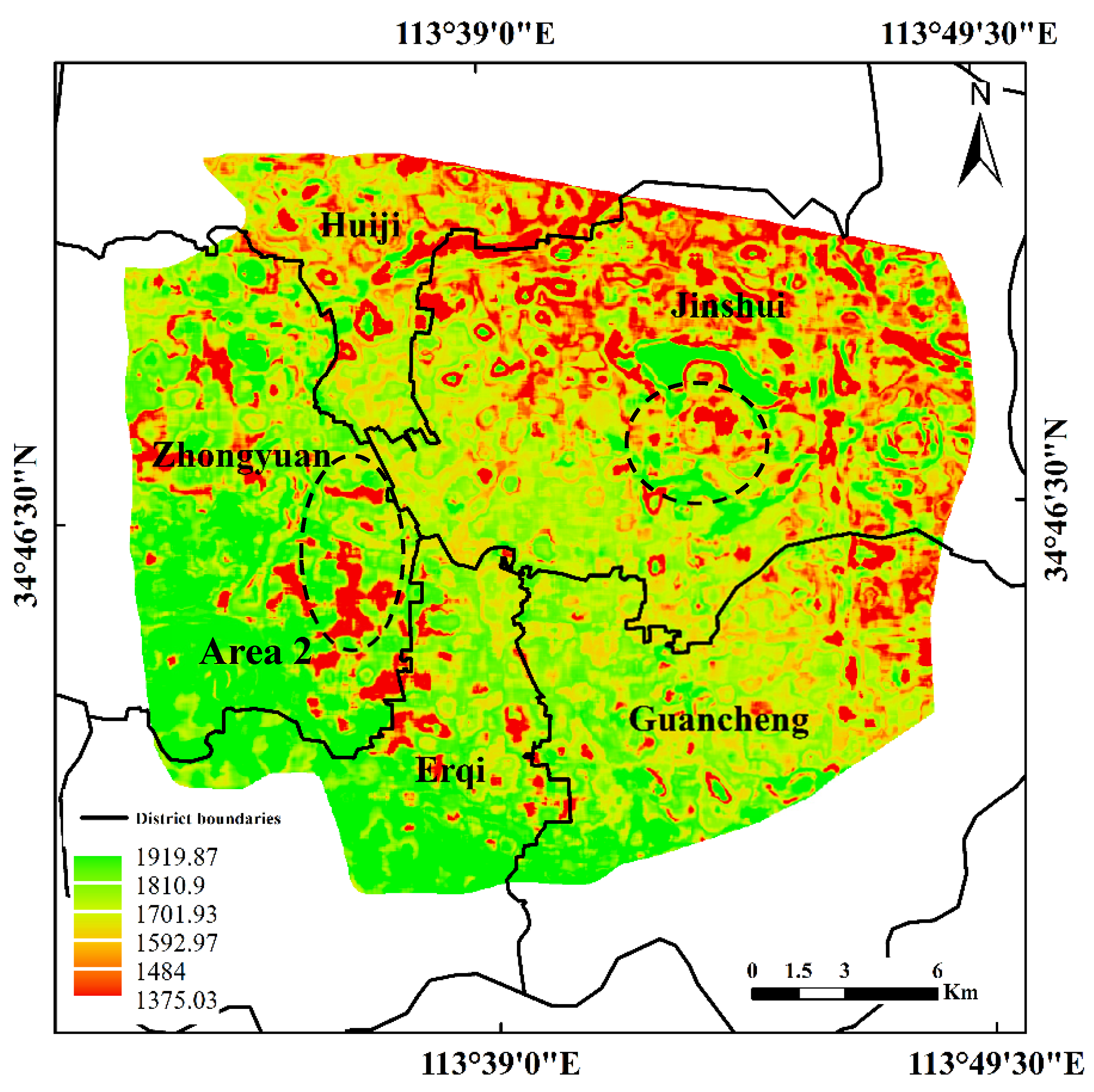
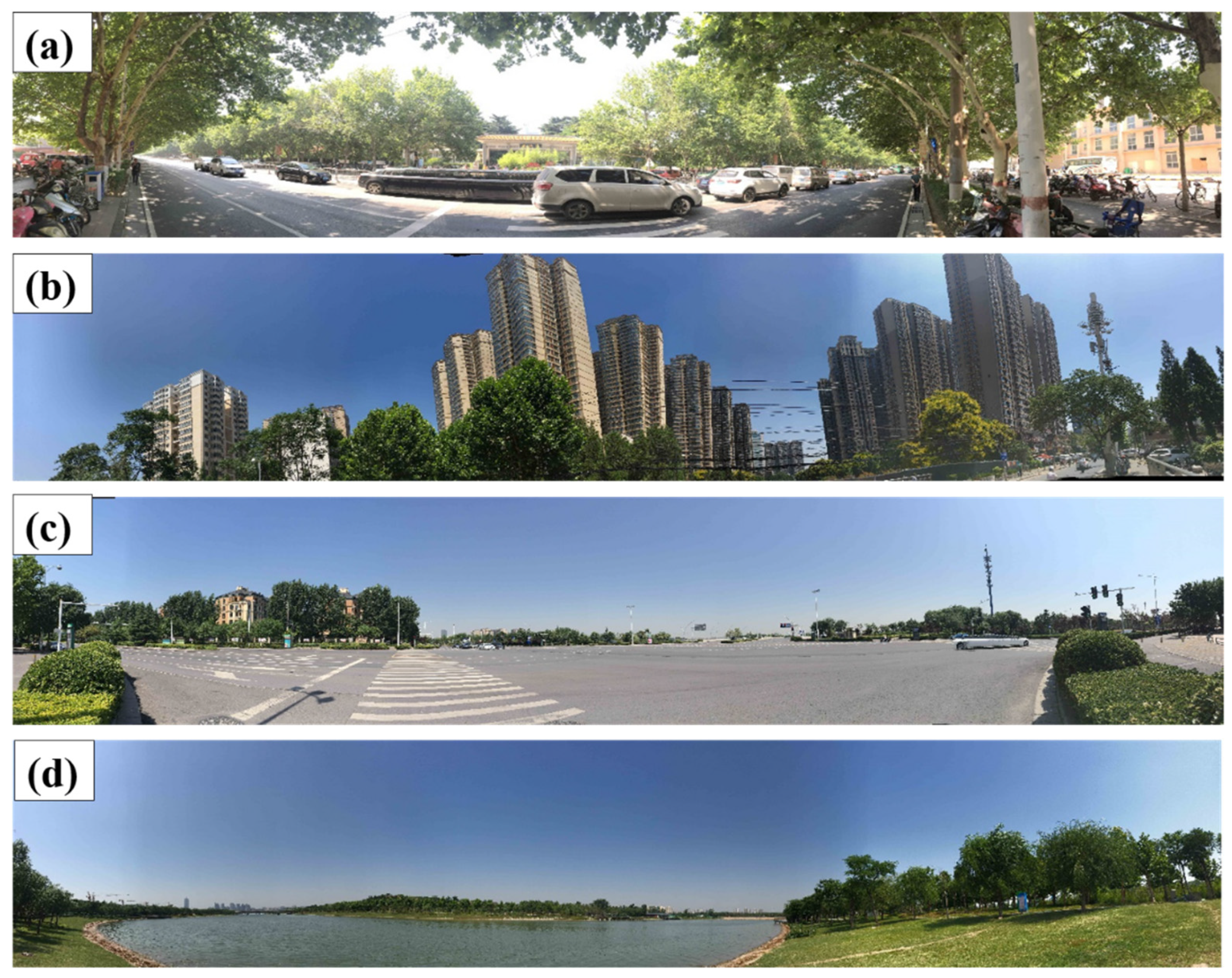
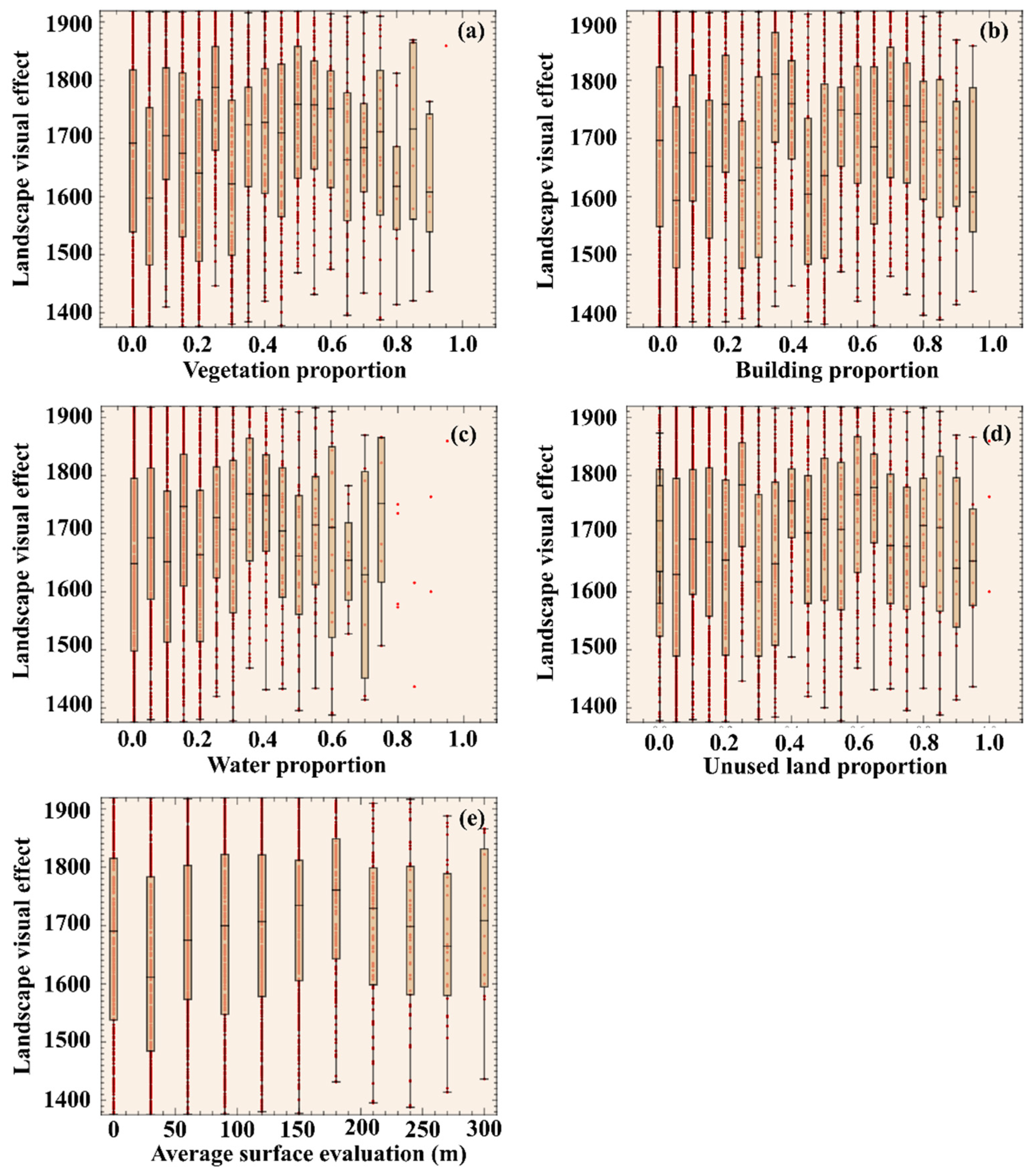
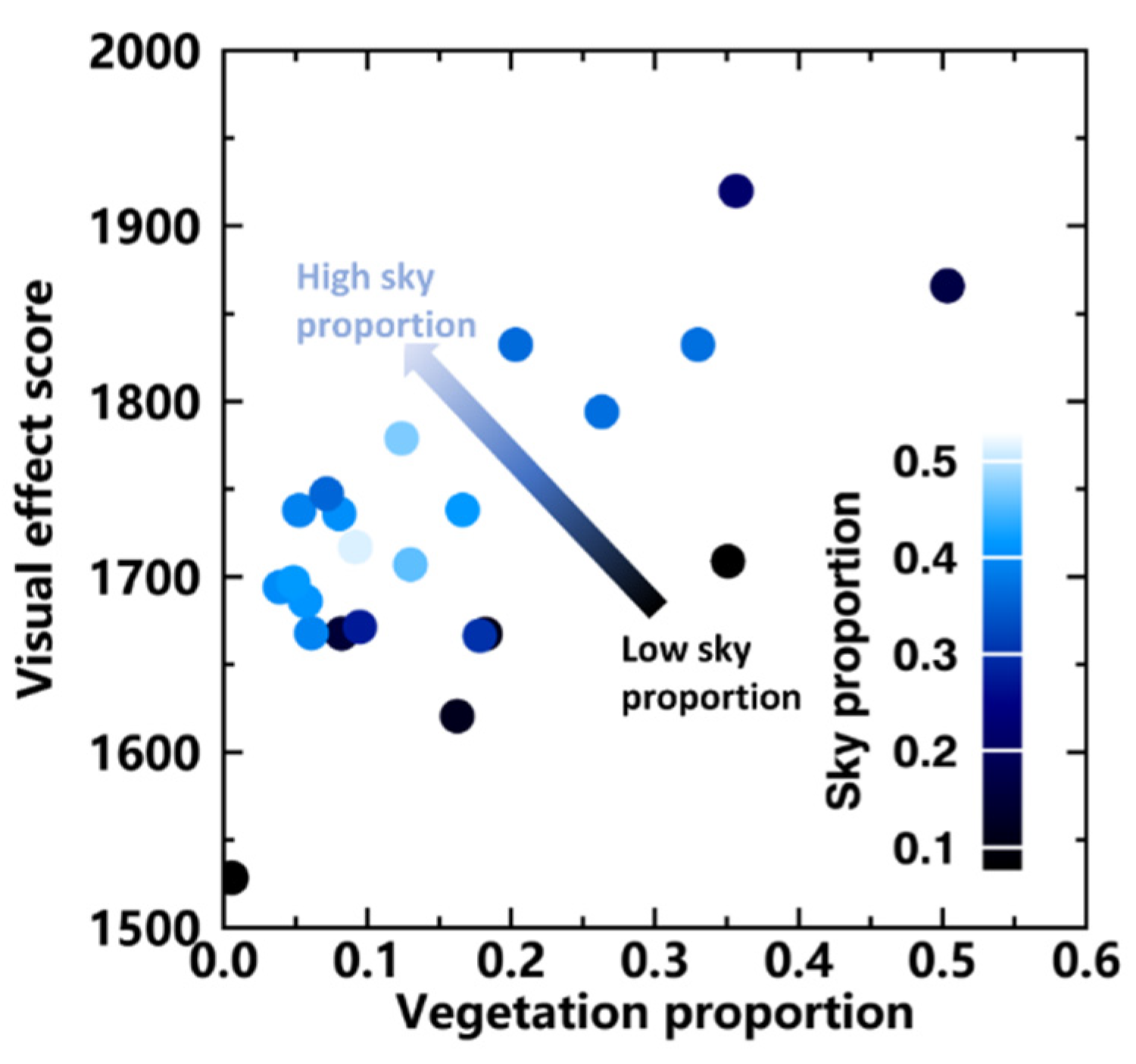
| Class | Landsat OLI Image | Google Earth |
|---|---|---|
| Vegetation | 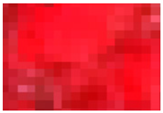 | 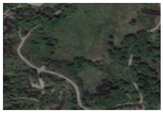 |
| Construction land | 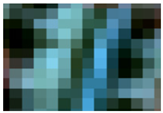 | 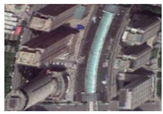 |
| Water | 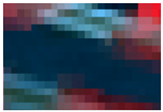 | 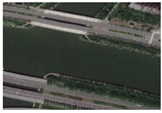 |
| Unused land | 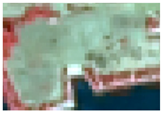 | 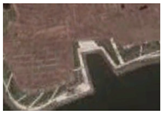 |
| Area | Number of Sampling Points | Average Score | Standard Deviation | Variance | Average Score Ranking |
|---|---|---|---|---|---|
| North Third Ring Road | 7 | 1451.26 | 65.36 | 4271.95 | 6 |
| Xiliu Lake Park | 9 | 1462.55 | 38.83 | 1507.71 | 5 |
| Jinshui River | 11 | 1544.19 | 62.71 | 3933.01 | 4 |
| Agricultural University (Wenhua Road) | 6 | 1644.08 | 63.28 | 4004.36 | 3 |
| Longzi Lake | 9 | 1729.78 | 65.20 | 4251.06 | 2 |
| Central Business District | 8 | 1780.63 | 75.28 | 5667.51 | 1 |
| Class | Ground Truth (Pixels) | ||||
|---|---|---|---|---|---|
| Vegetation | Construction Land | Water | Unused Land | Total | |
| Vegetation | 594 | 0 | 0 | 0 | 594 |
| Construction land | 0 | 231 | 36 | 3 | 270 |
| Water | 0 | 0 | 681 | 0 | 681 |
| Unused land | 0 | 32 | 0 | 234 | 266 |
| Total | 594 | 263 | 717 | 237 | 1811 |
Publisher’s Note: MDPI stays neutral with regard to jurisdictional claims in published maps and institutional affiliations. |
© 2022 by the authors. Licensee MDPI, Basel, Switzerland. This article is an open access article distributed under the terms and conditions of the Creative Commons Attribution (CC BY) license (https://creativecommons.org/licenses/by/4.0/).
Share and Cite
Xi, C.; Guo, Y.; He, R.; Mu, B.; Zhang, P.; Li, Y. The Use of Remote Sensing to Quantitatively Assess the Visual Effect of Urban Landscape—A Case Study of Zhengzhou, China. Remote Sens. 2022, 14, 203. https://doi.org/10.3390/rs14010203
Xi C, Guo Y, He R, Mu B, Zhang P, Li Y. The Use of Remote Sensing to Quantitatively Assess the Visual Effect of Urban Landscape—A Case Study of Zhengzhou, China. Remote Sensing. 2022; 14(1):203. https://doi.org/10.3390/rs14010203
Chicago/Turabian StyleXi, Chaofan, Yulong Guo, Ruizhen He, Bo Mu, Peixuan Zhang, and Yuan Li. 2022. "The Use of Remote Sensing to Quantitatively Assess the Visual Effect of Urban Landscape—A Case Study of Zhengzhou, China" Remote Sensing 14, no. 1: 203. https://doi.org/10.3390/rs14010203
APA StyleXi, C., Guo, Y., He, R., Mu, B., Zhang, P., & Li, Y. (2022). The Use of Remote Sensing to Quantitatively Assess the Visual Effect of Urban Landscape—A Case Study of Zhengzhou, China. Remote Sensing, 14(1), 203. https://doi.org/10.3390/rs14010203






